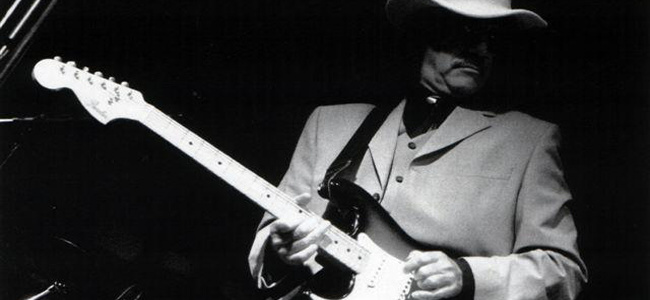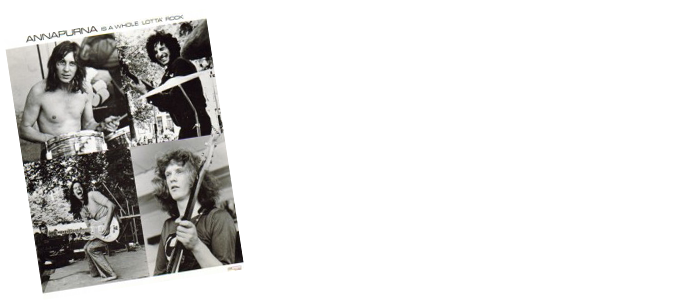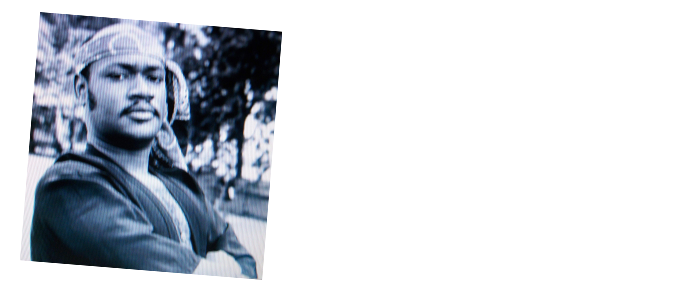Rock n Roll Years

ROCK
…Following on from my Intro Years
In the late 50′s-early 60′s, there were two centres of Rock in Britain – Liverpool and London; part of the Merseybeat scene in Liverpool, Pete’s diaries from the time showing out of nearly 1000 gigs they included playing at such places as the Kings Rhythm and Blues Club, the Borgia club, Riverpark, Plaza St. Helens, Belle Vale Beat Club, The Peppermint Lounge, St. John’s Hall, Hope Hall(on following nights with both the Roadrunners and Savva ), Litherland Town Hall, Queens Hall Widnes(on the same bill as Screaming Lord Sutch and his Savages, and Rory Storm), the Majestic (same bill as The Beatles – they learned Please Please Me in the band room), Quaintways, Wigan Emp(ress Ballroom) – later the home of so-called Northern Soulthe Iron Door, Mardi Gras, and, of course the Cavern Club…
AND FOLK
Pete was also into the folk scene in Liverpool, appearing at the Philharmonic Hall with the Spinners, playing acoustic guitar. As “Timothy” (the idea of Bob Wooler, folk and rock promoter and compere of the Cavern club, and Jim Turner, manager of the Odd Spot club), Pete organised and ran the Sound of Folk clubon THe Wirral and played at many folk venues across Merseyside, including countless appearances at the Spinners club.
It was Cliff Hall from the Spinners who introduced Pete to the music of the Carter family and the great Woody Guthrie.
Pete Seager was a frequent visitor to the Spinners club, and also the young Paul Simon, who was at that time living in London. Indeed, it was the day after Paul sang at the club that returning to London, he changed trains at Runcorn Station with a “suitcase and guitar in hand” – and recorded “Homeward Bound” shortly afterwards, with Tex Makins on bass and the Blue Fames playing the session.
At one of the main Merseyside gigs, Wigan Empire, Pete met Dick Heckstall-Smith, who was at that time playing with the Graham Bond Organisation (in terms of brilliance, the G.B.O was slightly after the Blue Flames). The Graham Bond Organisation consisted of Graham himself on organ, Jack Bruce on bass, Ginger Baker on drums, and of course, Dick on sax.
Dick told Pete he was wasted in Liverpool, to go up to London where there was a thriving session scene and he’d have no trouble cracking it “the way you play”.
LONDON
So Pete set off, with a scholarship to the University of London under his belt “to pay for the penetration of the music industry”. While at Uni, he was determined to follow Dick’s advice so he went singing in the Folk clubs and busking with his girl-friend from Liverpool, Polythene Pam Balmer. During the week Pam worked as an Airline hostess but at weekends she sang folk songs with Pete at Marble Arch Tube Station.
Pam lived in Macketts Lane in Liverpool, next door but one to a certain George Harrison who was to immortalize her in song as “Polythene Pam”, so called because of her trendy black-and-white plastic mac.
One day, busking on Speakers Corner in the pouring rain, Pete was spotted by a hot-dog seller, who said “You’re good, why don’t you go down to Bunjie’s?”.
Bunjie’s Coffee House was, and indeed still is, a trendy haunt of the Blues and Folk fraternity. Situated in Litchfield Street it was a haven for acoustic music enthusiasts. Many original singers, songwriters and musicians hung out there.
Pete played there with Terry Masterson and ex-Strawb Tony Pilsen. Within three weeks he had a resident Monday spot and soon had dropped out of University.
Pete was drinking with Tony Pilsen one night at the Britania pub in Belsize Park when a mutual friend mentioned that a Multimedia group needed a guitarist. Off went Pete and phoned the girl who ran the group, Leonie Scott Matthews, was invited to an audition in a house in Hampstead and got the job.
So, by now, within a year of arriving in London, he was resident in Bunjie’s in the West End on Mondays, and in Hampstead on Thursdays.
The Multimedia group, called Pentameters, are still going strong employing mime artists, poets and writers most of whom are household names.
1969
Then Pete fell in love, with Vanessa who ran the bookstall and the Liquid Lightshow at London’s top venue, Middle Earth at the Roundhouse. Through Vanessa, who knew everyone in the business, Pete met Lee Harris, playwright, and was asked to write the music for one of his West End productions, “Loveplay”, due to open on May 13th, 1969.
Amongst the musicians recruited to play was Jimmy Scott (the man who really wrote “Obladi”). Through Jimmy, Pete met Tex and the rest of the Blue Flames.

Georgie Fame told Pete he had so much more to offer, while at the same time Hendrix’s roadie Pierre introduced him to that team and Chris Farlowe’s Thunderbirds.
Chris was a frequent visitor to Pete’s gigs and did a lot of work with him, also Chris’s conga player Keith de Groot who was playing with the session squad backing Donovan, which consisted of Jimmy Page, John Paul Jones, and various drummers.
Keith had already completed his first Led Zeppelin album with Jimmy Page, but as Zep freaks will know, disappeared shortly afterwards.
At about this time, Pete met Rob Gold then with Transatlantic Records, and worked on many sessions with him in the West End, Rob playing keyboards.
Pete and Tex built up a firm friendship and were joined by Viv Prince (the Pretty Things drummer) to become one of the most sought after session squads in London. Pete and Tex worked on countless sessions for International producers for many years, mostly in secret. “We’d play rhythm and lead tracks for different producers and labels and get paid cash ….we seldom knew who the Artiste was” recalls Pete “and didn’t care. We were just a bunch of jobbing musos going into any studio and doing a quick accurate but always excellent job of work…..Artisans really”
JAM RECORDS
As well as sessions, from 1969 to 1975 Pete arranged and produced as “Jam Records” for bands such as Jungle Soup, Royal Martian Fools, The Little Vehicle ( for Multimedia), and Judy Fisher (with Rob Gold).
Judy was a singer/songwriter and her brother Matthew was an organist and friend of Nick Mobbs. Nick was an A & R executive (Artists and Repertoire) at EMI and had set up the Harvest label, whose first signing was ELO, and they wanted Annapurna, which Pete was in at the time, because Matt had recommended them as a brilliant band. Unfortunately, Annapurna had just signed to Dick James, the Beatles publisher, so Annapurna went with the Beatles publisher, not with the Beatles company, and were released on Jam.

GALE
Pete was invited to become booker for Gale (which was the Tremeloes agency) where he booked, not just the “Trems”, but the Troggs (which he joined for a couple of years), the Alan Bown Set, Thunderclap Newman (whom he not only joined, but had a No. 1 hit, with the fantastic “Something in the Air”), and lots of others.
Pete spent a lot of time at Apple where he was involved with many of the Apple acts and played with many of the bands, at places like the Speakeasy Club, Scotch of St. James, the Experience, and just about every other club and music venue in London.
Pete was performing at the Speakeasy Club one night when Chuck Berry jumped on stage and actually said (down the microphone) “Peter you ARE rock’n’roll”! Praise indeed!
(The Speakeasy Club was very picky about its clientele. In 1977 Tony Parsons, of NME, turned up late one night with a group of friends only to be turned away for not being ‘cool’. The group of friends? The Clash…)
Many of the musicians Pete works with now, he met at the time.
One of the bands was the ill-fated “Ellis”, and it was here that Pete and Zoot began to work closely together,and also Pete met Nick Payn, who was working with Sarah Gordon at the time.
Pete specialised in visiting Americans, particularly Black ones, as his formative years in the melting pot of Liverpool bore fruit in the music of American blues along with the likes of Percy Sledge, Wilson Pickett, and Carl Douglas.
KUNG FU FIGHTING
One night in Trier I was touring with Percy Sledge. The German DJ introduced a record “Kung Fu Fighting” announcing it was number 1 in the German charts.
“As soon as I got back to the hotel I rang Mick Eve ……get home if you can put a dep in with Percy” was the command. And so I did. Three weeks later we’d rehearsed a complete set and Carl Douglas was on the road.
This was great – Kung Fu Fighting sold well (10.5 million) and “I lost about 15kg from touring incessently for a couple of years.”
Pete established a new band after Gonzalez – The Amazing Blaze, with fire-eaters and effects. This was resident at The Speakeasy…………which has its own section on this site.

A STUDIO IN THE COUNTRY
What a man needs after 20 years is a studio in the country! With that Pete found the ideal location an old village smithy in South Warwickshire only 8 miles south of Stratford-upon-Avon. And here he met the voice coach of the Royal Shakespeare Company. Many voice recordings were made for the RSC and the studio used extensively for recording.
It was great fun and a wonderful place to bring up young children. Many of Pete’s old mates travelled down from London, and the Fairports lived not far away. So music blossomed in a very different way to the rough and tumble of the West End of London and in its way equally successfully.
Pete began to spend more time in London again, this time in Publishing, having mastered all areas of copyright (in order to protect himself) and the inner workings of the High Court. He did much international committee work on copyright and intellectual property, and at the same time started touring the world again, this time commuting between London Western Europe and the Former Soviet Union, mainly solo jazz and blues guitar.
2001
Pete moved to the beautiful Forest of Dean to put down some grass roots, meet local musicians and take things easy. “I was totally knackered” Pete quipped.
Of course things can’t stand still for long.
Pete was offered Nimbus a specialist distributor of classical and jazz CDs which he bought and sold on (in name) to another distributor leaving him free to enjoy himself at grass roots.
Looking round for things to do he started teaching,and playing incognito in open mike spots at local pubs.Then he slowly found himself with a new project – Hereford Music Studios, a not-for-profit organisation, limited by guarantee, for which Pete is a voluntary adviser. His expertise and freely-given advice was invaluable to the Music Studios, the production company (Speakeasy Recordings), and a number of up-and-coming artistes. He has been instrumental (sorry!) in getting Speakeasy Recordings signed up with OneMedia and i-tunes.
In the summer of 2005, Pete was approached by Mick O’Toole (formerly of the Commitments) to play in his band, playing Swing jazz and Blues. Along with Phil Jacobs on drums they have been touring the Midlands as RPM, playing to packed audiences, and have completed an excellent live album, issued on download by One Media.
POOR MICK HAS GONE …….but his voice lives on
Poor Mick heartbroken over a complicated love affair took his own life in 2010